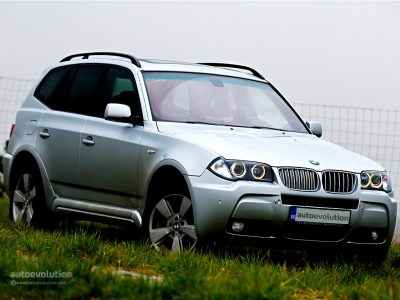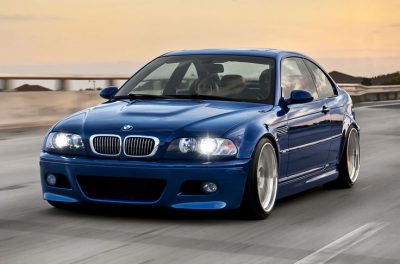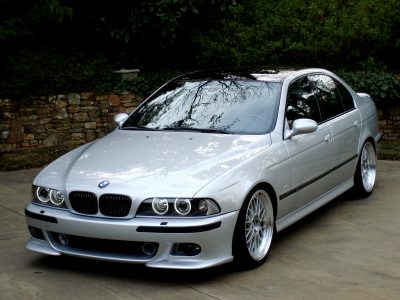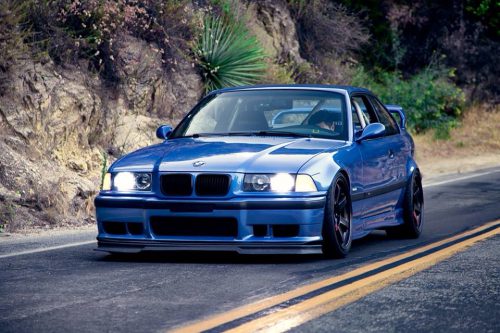From Wikipedia
The X3 premiered in September 2003 at the Frankfurt Auto Show (Internationale Automobil-Ausstellung), sharing its rear suspension with the E46 330xi and using an automatic four-wheel drive system marketed as xDrive. All X3 models feature BMW’s all wheel drive system, with a default 40:60 torque split between the front and rear axles and the ability to direct all torque to either axle. The system used an electronically controlled multiple-plate clutch to enable infinitely adjustable, fully variable distribution of torque from front to rear with the capability of up to 100 percent of engine torque going to either axle. BMW markets the crossover as a Sports Activity Vehicle, the company’s descriptor for its X-line of vehicles.
From Wikipedia
In 1993, the development programme for the E46 began under chief engineer Wolfgang Ziebart and head of R&D Wolfgang Reitzle. In late 1993, design work began under chief designer Chris Bangle and continued into 1995. In May 1995, the general exterior design of the E46 by Erik Goplen of DesignworksUSA was approved and as a result DesignworksUSA was contracted by BMW to work alongside BMW Group’s in-house design team to create the exterior body work for the 3 Series range in February 1996. The design team put an emphasis on improving aerodynamics and increasing the car’s aggressive stance. Design patents were filed in Germany on 16 July 1997 and in the US on 16 January 1998
From Wikipedia
The BMW E39 is the fourth generation of BMW 5 Series, which was sold from 1995 to 2003. It was launched in the sedan body style, with the wagon/estate body style (marketed as “Touring”) introduced in 1996. The E39 was replaced by the E60 in 2003, however E39 Touring models remained in production until December 2003.
The proportion of chassis components using aluminium significantly increased for the E39, and it was the first 5 Series to use aluminium components in the front suspension. It was also the first 5 Series where a four-cylinder diesel engine was available. Rack and pinion steering was used for the first time in a 5 Series, being fitted to the E39 four-cylinder and six-cylinder models. Unlike its E34 predecessor and E60 successor, the E39 was not available with all-wheel drive.
From Wikipedia
Development on the roadster began in 1991 and was led by Burkhard Göschel. The exterior was designed by Joji Nagashima, being completed in mid-1992 at 39 months before production and the design was frozen in 1993. Design patents were filed on April 2, 1994 in Germany and on September 27, 1994 in the US. The Z3 was introduced via video press release by BMW North America on June 12, 1995. Production began on September 20, 1995.
Development on the coupé model was run by a group of BMW engineers outside of work in their own time. The Z3 Coupé shares the same platform and parts with the roadster, but features a chassis-stiffening hatch area and is 2.7 times stiffer in comparison. The Z3 Coupé was unveiled at the 1997 Frankfurt Motor Show.
The Z3 was the first BMW model to be solely manufactured outside of Germany. It was manufactured in Greer, South Carolina.
From Wikipedia
The BMW E36 series is the third generation of the BMW 3 Series range of compact executive cars, and was produced from 1990 to 2000. The initial models were of the 4-door saloon body style, followed by the coupe, convertible, wagon (“Touring”) and hatchback (“Compact”) body styles in later years.
The E36 was the first 3 Series to be offered in a hatchback body style. It was also the first 3 Series to be available with a 6-speed manual transmission (in the 1996 M3), a 5-speed automatic transmission and a four-cylinder diesel engine. The multi-link rear suspension was also a significant upgrade compared with previous generations of 3 Series.
The E36 was named in Car and Driver Magazine’s 10Best list for every year it was on sale.
The E36 M3 is powered by the S50 or S52 straight-six engine (depending on country). The E36 M3 was released in 1992 and was available in coupé, saloon and convertible body styles.




